2-Pack Solar Ultrasonic Animal Repeller with Motion Sensor and Strobe Light for Yard and Garden
$52.99
Keep your beds, bins, and borders calm without chemicals. This 2-pack solar ultrasonic animal repeller with motion sensor and strobe light reacts only when cats, deer, raccoons, rabbits, skunks, squirrels, or stray dogs cross its path, sending a quick burst of high-frequency sound and flash that nudges them to move along. It is a humane, low-upkeep option that fits right into an integrated garden plan, and its weather-resistant housing is built for life outdoors in typical rain and splashes. Independent trials on ultrasonic cat deterrents show a real, measurable reduction in garden intrusions when units are placed and maintained correctly, which is exactly how we set them up.
Description
If you are tired of paw prints on the beds and seedlings clipped overnight, the 2-Pack Solar Ultrasonic Animal Repeller with Motion Sensor and Strobe Light for Yard and Garden gives you a humane, chemical-free way to nudge wandering wildlife to keep moving.
The Solar Ultrasonic Animal Repeller pairs a PIR motion sensor with targeted ultrasonic sound and quick flash bursts so cats, deer, squirrels, raccoons, rabbits, skunks and stray dogs think twice before treating your garden like a shortcut or buffet. As with any wildlife deterrent, results are strongest when you combine multiple scare cues and rotate tactics, which is exactly what motion-triggered sound and light are designed to support according to university wildlife-damage guidance.
Key Customer Benefits
- Humane, chemical-free protection that still works: Motion-triggered sound and light have been shown to cut deer intrusions and crossings nearly in half in field tests, which means you can protect beds and shrubs without fencing or harsh sprays.
- Smarter scare that reduces “getting used to it”: Wildlife adapts to constant noise or light. Devices that only fire when the sensor detects an animal typically stay effective for longer because the cue remains surprising. Extension guidance recommends rotating or moving scare devices and using motion activation for better results.
- Real-world support for cats and small animals: Independent trials of ultrasonic cat deterrents found a moderate, measurable drop in garden intrusions, giving householders a practical partial solution when combined with good yard hygiene.
- Designed around how sensors actually perform outdoors: Passive infrared sensors commonly cover about 10 to 70 feet depending on placement and conditions, so you can position each unit to guard the approach paths animals really use, like fence lines and bed edges.
- Solar convenience for low upkeep: Solar-powered ultrasonic deterrents recharge by day and fire only on motion, which conserves energy and cuts battery changes. This operating pattern mirrors how many commercial wildlife deterrents are built to run.
- Flexible tool in a broader strategy: Research and extension bulletins consistently note that combining tactics works best. A motion-activated sound and light repeller pairs well with barriers, plant choice, or even sprinklers to keep animals guessing and out of routine.
Product Description
What this product is
The 2-Pack Solar Ultrasonic Animal Repeller with Motion Sensor and Strobe Light for Yard and Garden is a pair of weather-resistant, solar-recharging units that protect small to mid-size areas in front of the sensor. Each unit combines three deterrents that wildlife find unpleasant, which are high frequency sound, a passive infrared motion sensor that only triggers when something warm moves into view, and quick strobe flashes that startle night visitors such as raccoons and skunks.
Motion-activated scare tools are a standard part of integrated wildlife control, especially when you want a humane, non-toxic option that encourages animals to pass through instead of settling in. Extension and state wildlife programs describe motion-triggered scare devices as useful tools, with the important reminder to move them occasionally so animals do not adapt.
How it works
Inside the housing is a PIR sensor that looks for changes in heat and movement. When a warm-bodied animal crosses that window, the unit fires a burst of ultrasonic sound at frequencies above typical human hearing and flashes the LED strobe for a few seconds. Because it only activates when something moves, the stimulus stays surprising instead of becoming background noise.
PIR motion sensors used in outdoor security and smart-home gear commonly cover on the order of 9 to 15 meters in front of the sensor, and about a 90 to 120 degree spread, although the real-world range depends on placement and temperature. You can use that expectation to aim each repeller down fence lines, along bed edges, or across small entry gaps where animals usually approach.
The units recharge by day and only draw power when the sensor fires. That pattern is shared with other solar wildlife deterrents and motion devices, which helps keep upkeep low. If your garden has multiple approach paths, use both units to create overlapping coverage so animals are more likely to trigger at least one device.
What makes it effective and different
No single wildlife tool is perfect, yet there is published evidence that motion-activated ultrasonic cat deterrents can reduce intrusions in residential gardens. A well known study commissioned by the RSPB reported a moderate, measurable drop in the chance of a cat entering a protected garden while the device was active. That gives householders a partial, humane solution, especially when combined with yard hygiene and barrier tactics.
For deer, research and state agency guidance indicate that animals can get used to constant sounds over time, which is why motion activation and varying placement are important. Agencies note that motion-triggered scare devices can help at entry points and during pressure periods, but they should be rotated and combined with other tactics like plants deer dislike or temporary netting around high value beds. The strobe component adds a second sensory cue at night, which improves the startle factor for skunks and raccoons that rely heavily on nighttime foraging.
I also want to be transparent. Field anecdotes show mixed results for raccoons in areas where they are already very bold around people. Some keep out at first, and others learn to ignore predictable lights. The fix is to vary the device angle and location every few days, and to pair the repeller with better bin lids, secured feeders, or a motion sprinkler that adds a short burst of water as another surprise. This layered approach is exactly what wildlife pros recommend, and it is the best way to turn a good repeller into a reliable system.
Product Specifications
| Spec | What to expect |
|---|---|
| Deterrents | Ultrasonic speaker plus LED strobe, triggered by PIR motion sensor. |
| Ultrasonic frequency | Roughly 13.5 to 45 kilohertz on many units with multi-mode dials. |
| PIR detection angle | About 110 degrees in front of the sensor. |
| PIR detection range | About 8 to 9 meters or 26 to 30 feet in clear conditions. |
| Typical coverage per unit | A forward cone that reaches up to about 26 feet with the 110 degree spread. |
| Water protection | Commonly IP44 splash-resistant housings on this class of repellers. |
| What IP44 means | IP44 is splashproof from any direction, suitable for sheltered outdoor use. |
| Power | Solar panel recharges an internal battery, with USB charging on many models for backup. |
| Operating temperature | Often specified around 0 to 45 degrees Celsius. |
| Materials | Weather-resistant ABS plastic is typical for the housing. |
| Adjustable modes | Multi-position dials for sensitivity and frequency are common, with optional strobe on or off. |
| Dimensions | Example product of similar design lists about 15.7 x 14.7 x 9.2 cm per unit, stake not included. |
| Included in box | Unit, stake or mount, USB cable, and manual. Some models do not include a wall adapter. |
| Safety notes | Some people can perceive ultrasound at close range, and pets may notice it. Avoid placing near play areas for infants and young children. |
How to Use and Install
Step 1: Map the animal “highways”
Before you place anything, watch your yard at dusk and early morning for a day or two. Animals prefer routines. Note the exact entry points and travel lines, like a gap under the fence or the run behind your hostas. Your goal is to aim the solar ultrasonic animal repeller across these paths so that an animal must cross the sensor beam to reach the plants.
Why this matters: Passive infrared sensors respond to warm bodies moving across their field of view, not straight toward it. Angling the sensor across a path usually triggers more reliably than pointing it head-on. Positioning and thermal background affect false alarms and missed detections, so plan the angle before you stake anything down.
Step 2: Choose smart mounting points and heights
Stake or screw-mount each unit so the sensor window faces the approach path, tilted slightly downward.
Height guide:
-
- Cats, rabbits, and skunks: about knee height or a little lower.
- Deer: waist to chest height, angled to catch a deer’s shoulder and head as it browses.
Distance: Start with the repeller 10 to 20 feet from the protected bed or bin, then adjust based on your test walk. Typical manuals for this class of PIR device quote about 8 meters maximum detection with roughly 110 degrees spread. Use that as a planning number, then verify in your yard.
Most garden repellers in this category are IP44 splash-resistant, which means protected from small solids and splashing water. Favor semi-sheltered spots and avoid direct sprinkler jets to extend the life of the unit.
Step 3: Power up and charge correctly
Place the unit in the Off position, then give it a good first charge.
- Solar first: A full day or two of sun helps the internal battery top up.
- USB back-up: If yours includes a USB port, top it up before the first night, especially in cloudy weather. USB backup is a common feature on modern solar wildlife devices and saves you from the first-week power dip.
Solar care tip: A dusty panel cuts charging. Wipe the panel with water and a soft cloth every few weeks. Skip abrasive pads; plain water and a soft sponge are usually enough.
Step 4: Dial in sensitivity, frequency, and strobe
Most units offer a Sensitivity dial and a Frequency dial, plus a Strobe on or off option.
- Sensitivity: Start mid-range, then increase until the device triggers when you walk across the protected area. Too high can cause nuisance triggers from waving shrubs or heat shimmer.
- Frequency: Many manuals suggest bands such as about 13.5 to 19.5 kilohertz for dogs and foxes and about 19.5 to 24.5 kilohertz for cats, raccoons, and skunks. Try the recommended band for your primary target first, then switch bands weekly if animals start to ignore it.
Strobe: Keep strobe on at night for raccoons and skunks. If a neighbor’s window is close, angle the unit down or switch the strobe off to keep the peace.
Step 5: Test the detection cone
Turn the unit on during daylight and do a “walk test.”
- Approach from the likely animal path and walk across the sensor window at different distances.
- Mark the farthest spot that still triggers sound and light.
- Re-aim or shift the stake so the trigger point sits in front of your plants, not inside them.
A quick test walk is the fastest way to confirm your cone covers the right area.
Step 6: Avoid the classic false-alarm traps
PIR sensors can false trigger when they “see” sudden heat changes.
- Keep sensors away from hot air vents, metallic fences that bake in sun, and moving foliage near the lens.
- Do not aim directly at a reflective water surface or west-facing glass that throws heat ripples at sunset.
- Trim plants that wave into the detection zone. These small changes cut phantom triggers significantly.
Step 7: Rotate placement so wildlife does not adapt
Animals learn patterns. Change the angle or move each repeller a few feet every 3 to 7 days during the first two weeks, then weekly after that if pressure is high. Studies on ultrasonic cat control and agency guidance on frightening devices both point to better results when the stimulus remains unpredictable.
Step 8: Layer tools for stubborn visitors
No single deterrent is perfect. For bold raccoons or deer that have learned your garden, add a motion-activated sprinkler at a key entry. Real-world device specs commonly advertise detection to about 36 to 40 feet with short water bursts, which complements sound and strobe nicely.
Maintenance that actually extends life
- Wipe the solar panel monthly or after storms.
- Check for spider webs or dust on the PIR window; even a thin film can reduce sensitivity.
- Re-seat stakes after heavy rain to keep the angle correct.
- Store or shelter units in extreme cold or prolonged heavy storms; splash-resistant is not the same as submersible or pressure-wash safe.
Step 10: Safety use
Although ultrasound is pitched above typical adult hearing, some people and pets can notice it at close range. Avoid placing units near children’s play areas, pet beds, or directly along a neighbor’s patio. If a pet seems bothered, lower sensitivity, change the frequency band, or re-aim so the cone does not cross your own paths.
Frequently Asked Questions
Do ultrasonic cat deterrents actually work in gardens?
Yes, there is peer-reviewed evidence that motion-activated ultrasonic cat deterrents can reduce cat intrusions. A two-year study reported in Applied Animal Behaviour Science found a moderate but measurable deterrent effect, which means they are a useful part of a wider strategy rather than a magic fix. The RSPB summarizes the same trial and notes the unit became more effective the longer it stayed in place.
What about deer? Will ultrasonic repellers keep them out?
Ultrasonics alone are not reliable for deer. Extension services advise that deer quickly adapt to single cues. They recommend combining motion-activated devices with other tactics such as resistant plants, temporary netting, or fencing and rotating scare methods so deer do not form a routine.
Can animals get used to these devices over time?
They can. Habituation is a known limitation of frightening devices. Research from the University of Nebraska–Lincoln and other wildlife programs shows that animal-activated or randomized devices slow habituation compared with constant stimuli. Moving devices periodically and mixing tools extends effectiveness.
Are motion-activated sprinklers worth adding to the setup?
For stubborn, night-active visitors like raccoons or even urban coyotes, motion sprinklers add a powerful surprise. Field studies and urban-wildlife projects report reduced presence when sprinklers are used correctly, which is why many pros pair sound and light with a short burst of water.
Will an ultrasonic repeller bother my pets or my family?
Most adults cannot hear ultrasonic frequencies, and these devices are generally considered safe for cats and dogs. That said, sensitive pets might notice the sound at close range. Watch your animals and reposition or change frequency if they seem uncomfortable. Safe in typical use, but observe your own pets.
What does IP44 water protection really mean for outdoor use?
IP44 means the enclosure is protected against small solid objects and splashing water from any direction. It is fine for rain and general outdoor exposure, but it is not designed for pressure washing or submersion. Sheltered placement and avoiding direct sprinkler jets will extend product life.
How far does the PIR motion sensor “see” and at what angle?
Specs vary by model, but outdoor PIR sensors commonly cover a cone about 110 degrees wide and can detect movement out to roughly 8 to 18 meters when mounted correctly. Always verify with a walk test in your yard.
Where should I aim it for cats, rabbits, skunks, and deer?
Aim across the approach path rather than straight at it, because PIR sensors trigger best when a warm body moves across zones in the sensor’s view. Mount lower for small mammals and higher for deer, and angle slightly downward.
Do these devices affect birds or other wildlife I want to keep around?
Ultrasonic animal repellers are not designed to target songbirds. For birds that cause damage, wildlife agencies use a broad range of frightening devices and emphasize variety and movement to prevent habituation. If you feed birds, simply avoid aiming the sensor cone at your feeders so it does not fire as birds fly by.
My unit seems to trigger when nothing is there. What causes false alarms?
Outdoor PIR can trigger on heat movement in the background, such as sun-warmed metal fences, swaying shrubs close to the lens, or heat reflections from glass and water. Relocating the unit, trimming plants near the lens, and avoiding hot vents or reflective surfaces usually solve the problem.
How should I keep animals from “figuring it out” after a week?
Rotate the angle or location every few days at first, then weekly if pressure stays high. Mix in a secondary cue like a motion sprinkler near the worst entry point. Variety and mobility keep the stimulus surprising and effective.
Does dust or weather reduce performance?
Yes, grime on the solar panel reduces charging and a dirty PIR lens dulls sensitivity. Clean both gently and keep the device out of constant sprinkler spray. Outdoor dust, rain, and snow can dampen ultrasonic output or interfere with sensors.
Conclusion
If your goal is a calmer yard without chemicals, the 2-Pack Solar Ultrasonic Animal Repeller with Motion Sensor and Strobe Light for Yard and Garden gives you a humane, low-upkeep way to make wildlife choose an easier route. Independent research shows motion-triggered frightening cues can reduce intrusions when used thoughtfully, especially for garden-roaming cats, and that varying placement keeps devices effective for longer. That is exactly how we set these up, and it is consistent with extension guidance on animal-activated deterrents.
For hungry deer, bold raccoons, or urban coyotes, a layered plan works best. Pair your solar ultrasonic repellers with simple physical tweaks and, if pressure stays high, add a motion-activated sprinkler at the worst entry point. Field and agency literature documents better, longer-lasting results when you combine tools rather than relying on a single cue.
Think of this as integrated pest management for gardens. Observe the routes, place and angle each unit so animals must cross the sensor, rotate positions so it never feels predictable, and keep the solar panel and lens clean. That is the IPM mindset: use multiple, sensible tactics that reduce damage while protecting people, pets, and the landscape.
Related products
-
Bird-X Yard Gard Ultrasonic Animal Repeller with Motion Sensor – 4,000 sq ft Coverage
$42.52 Buy Now -
FAYINWBO Solar Ultrasonic Animal Repeller with Siren and Flashing LEDs for Yards and Gardens
$49.99 Buy Now -
Cleanrth TSBR620 Sonic and Ultrasonic Bird Repeller with Triple Scan Technology
$74.99 Buy Now -
Outdoor Bird Deterrent with Motion Sensor for Pigeons and Woodpeckers
$49.98 Buy Now
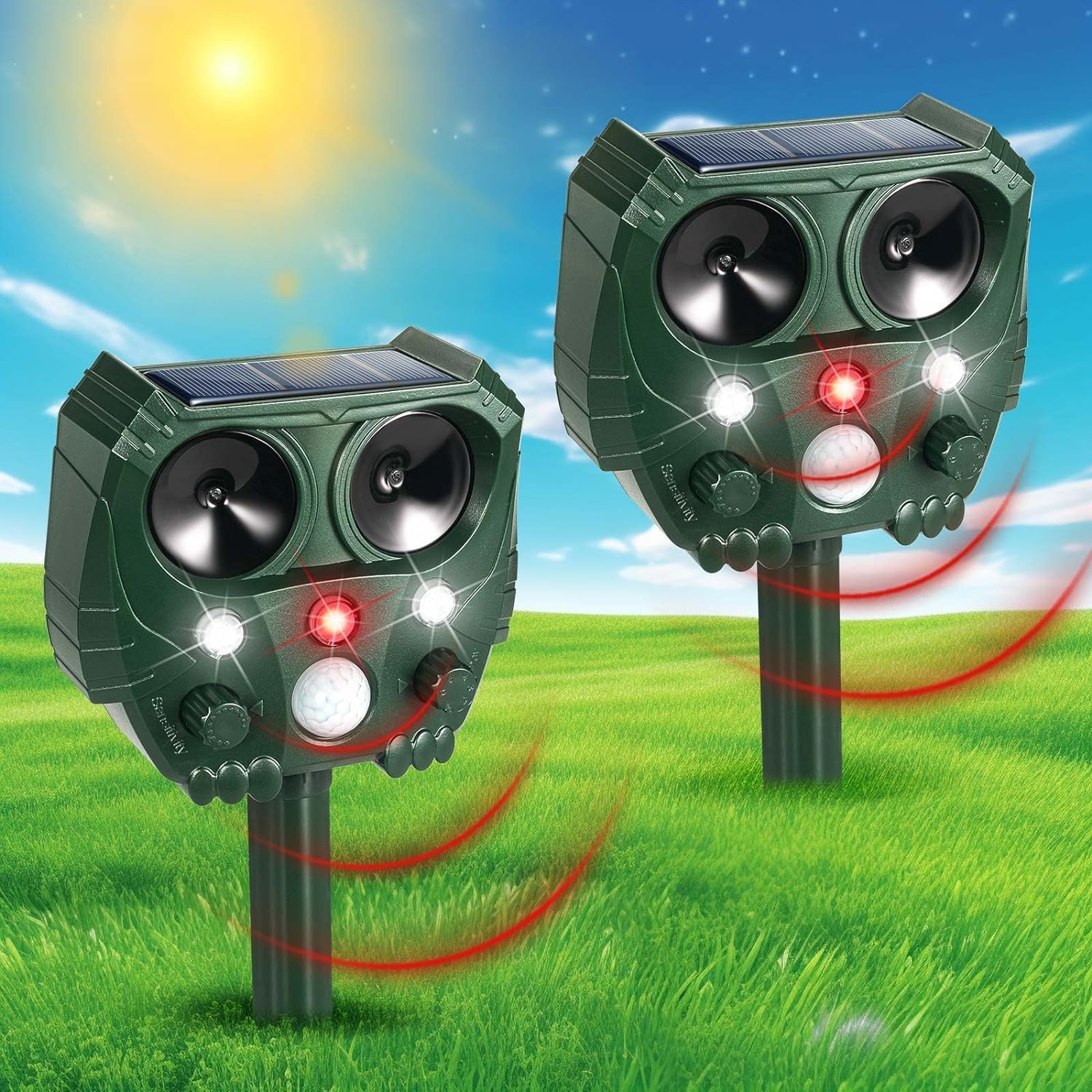
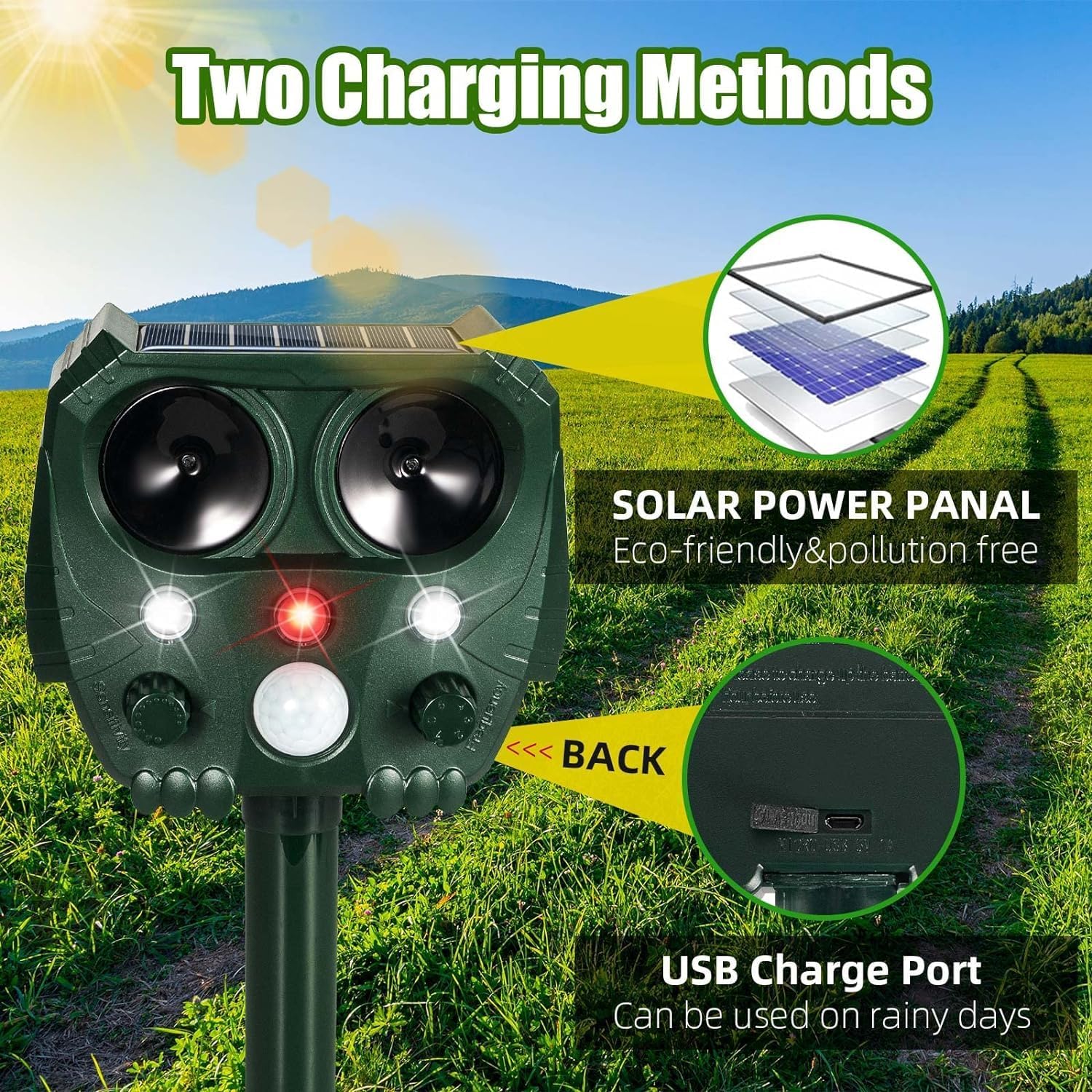
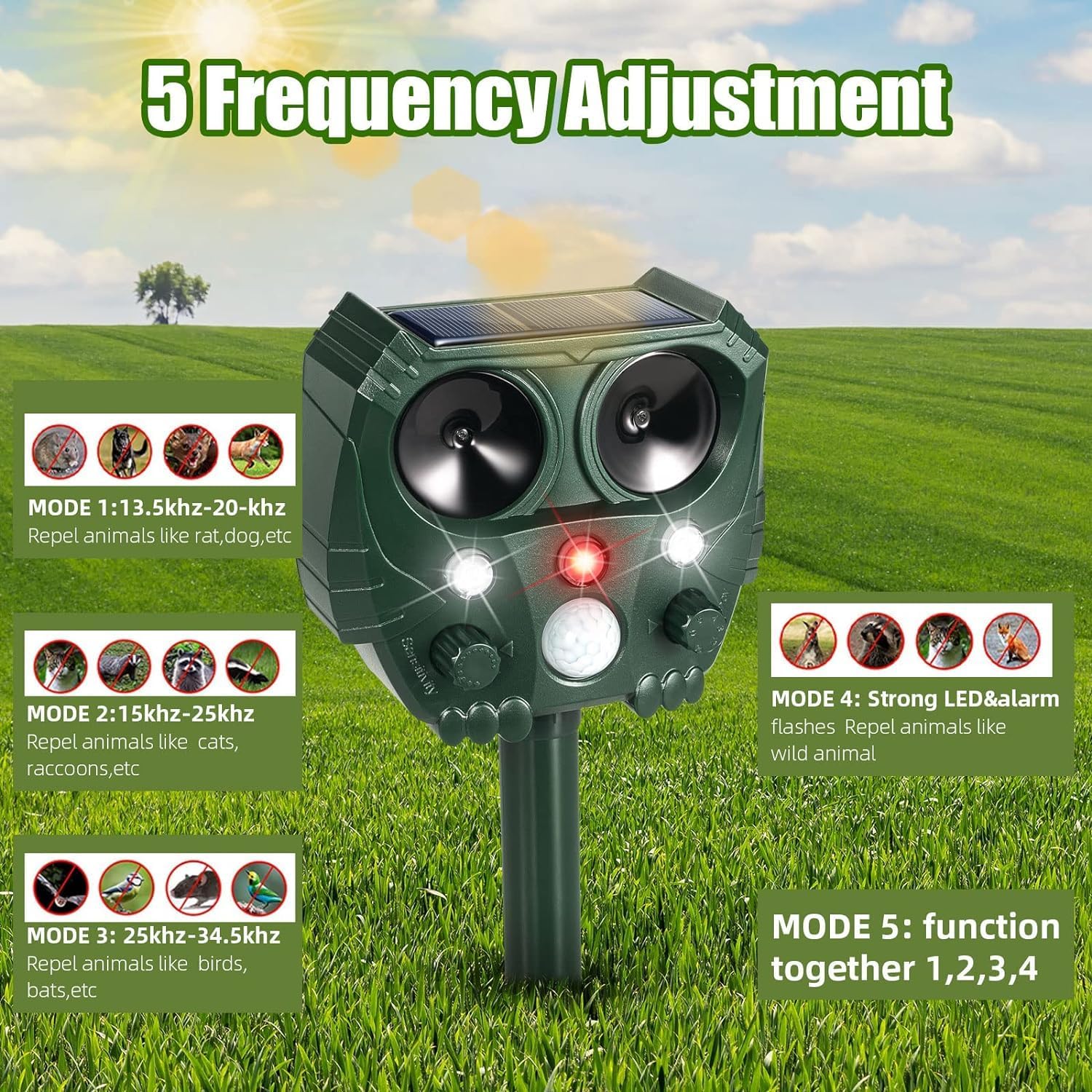
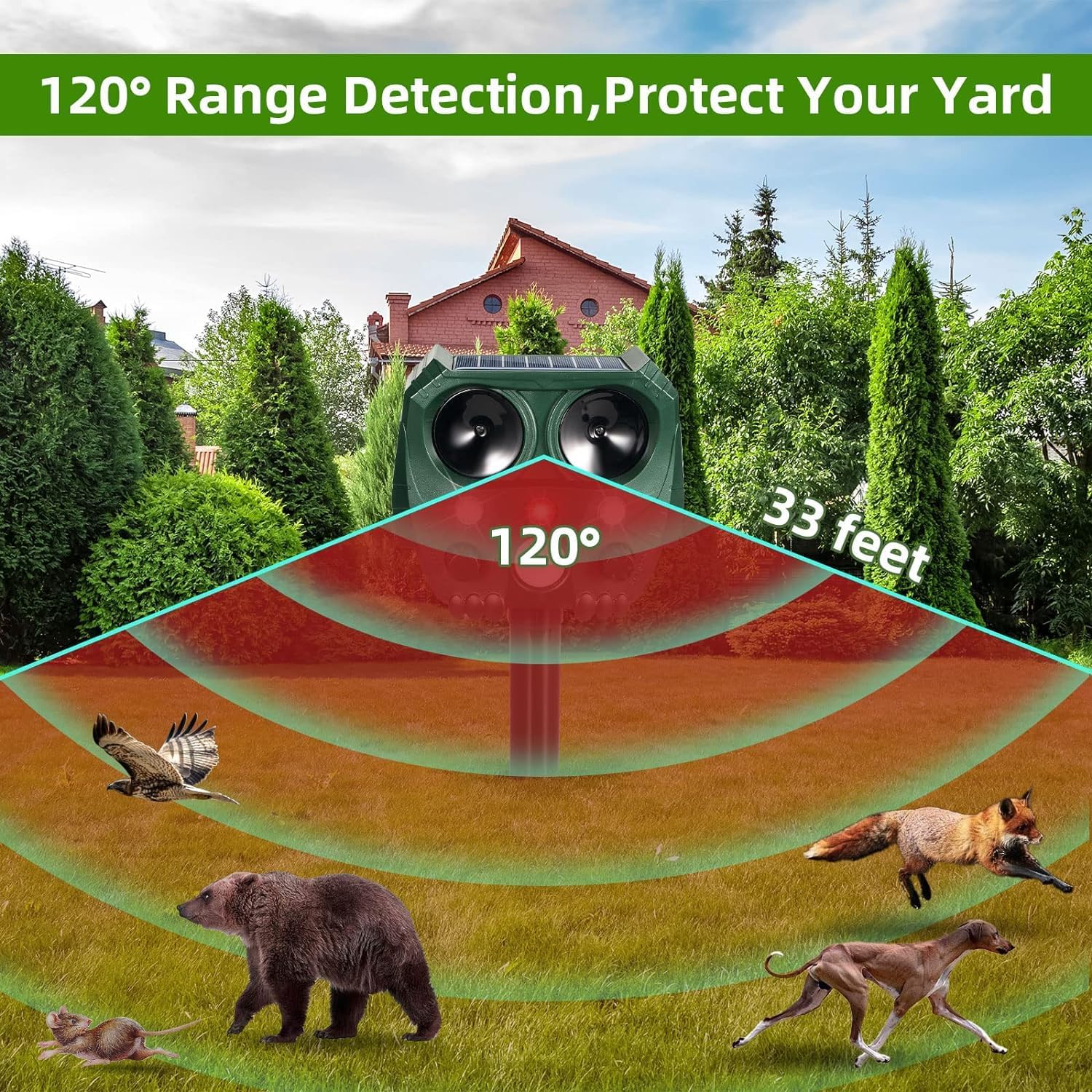
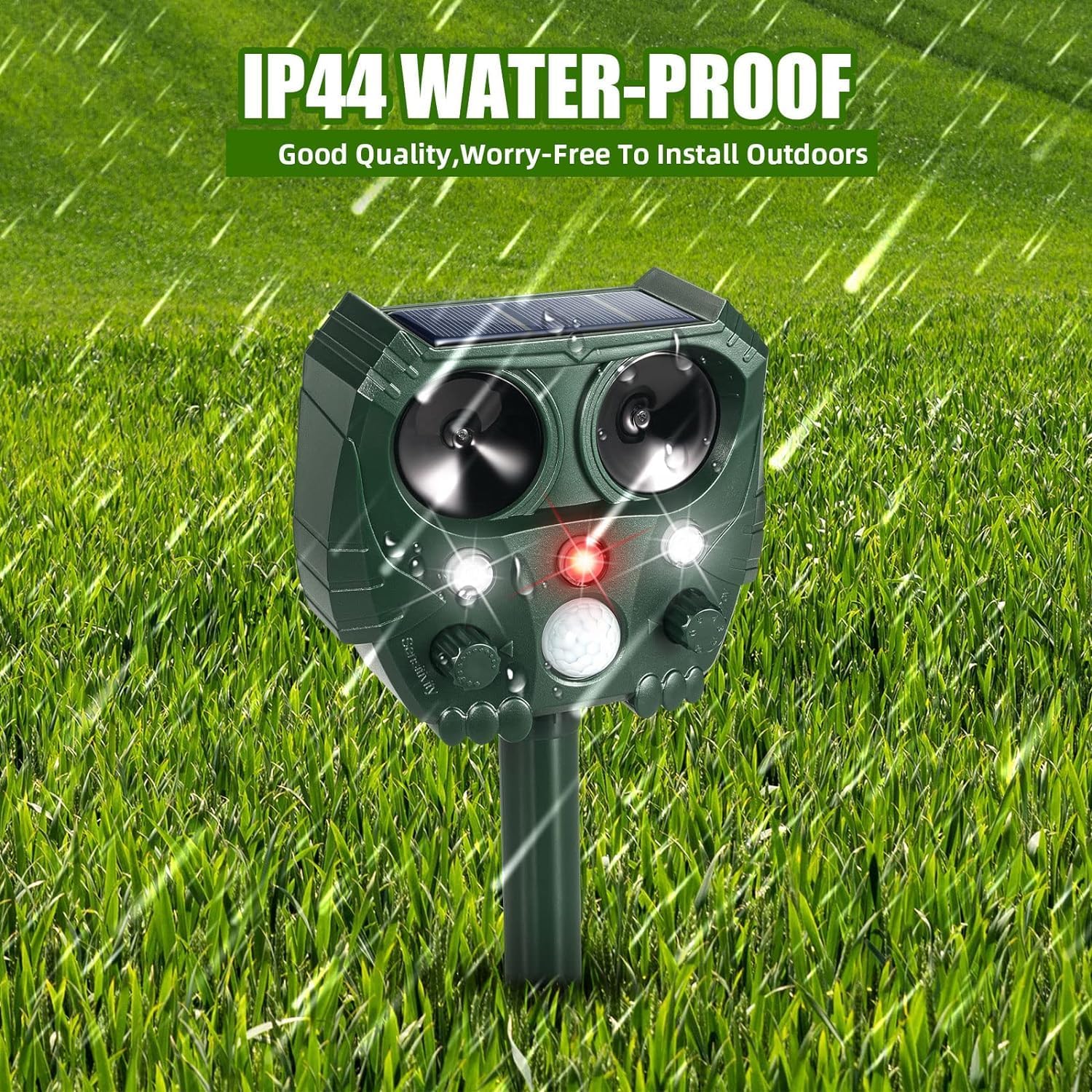
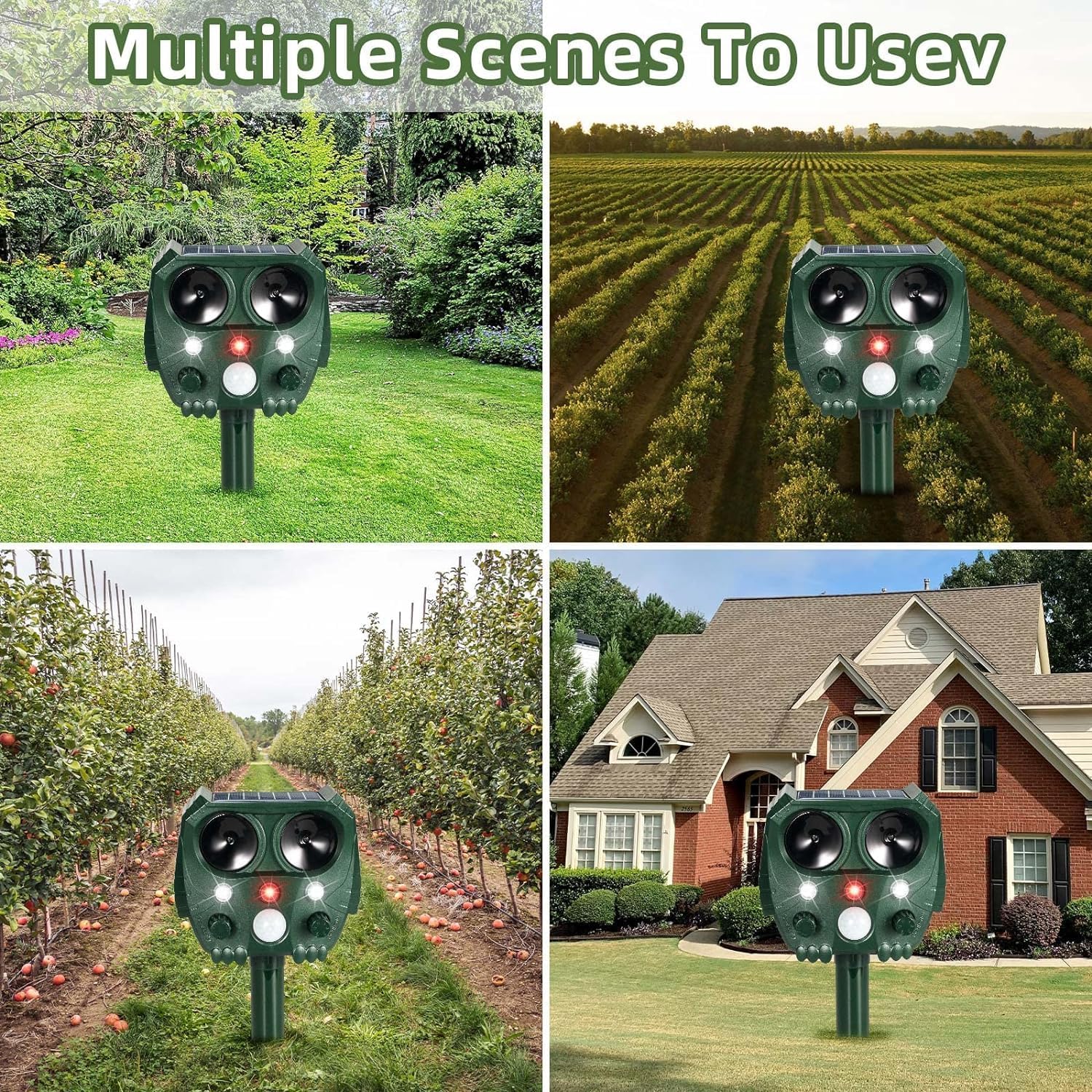
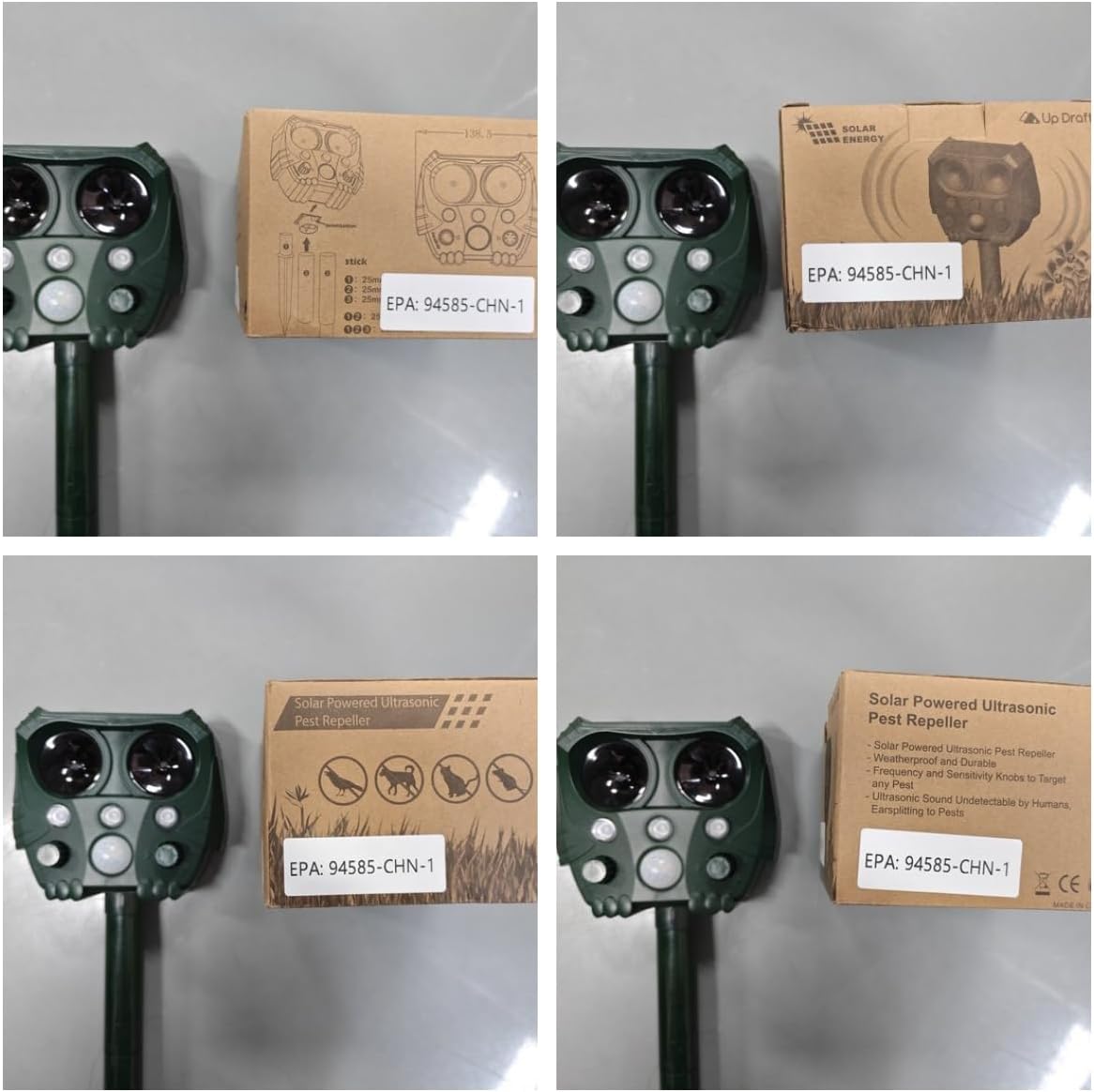
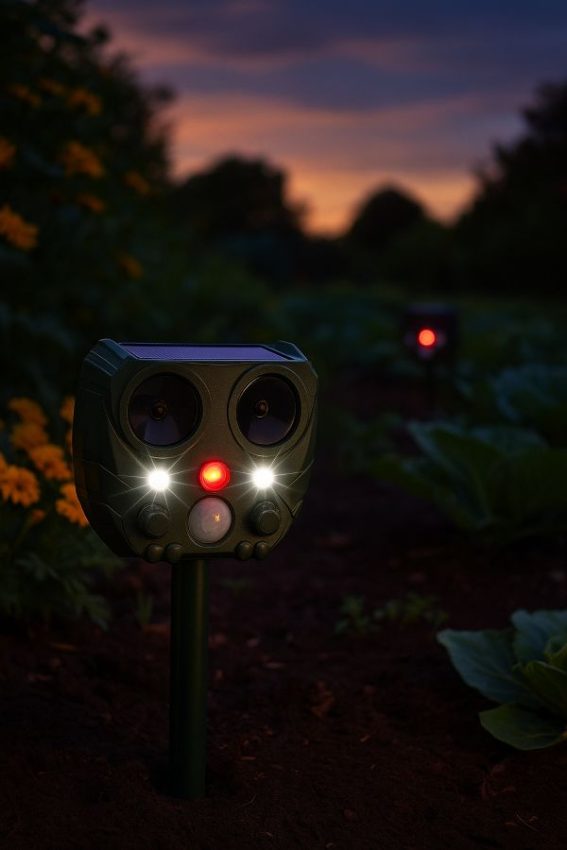
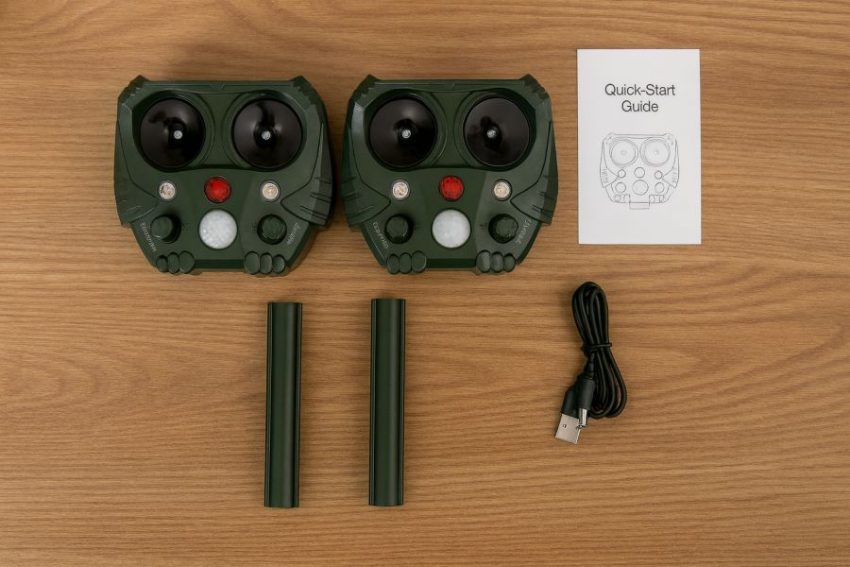
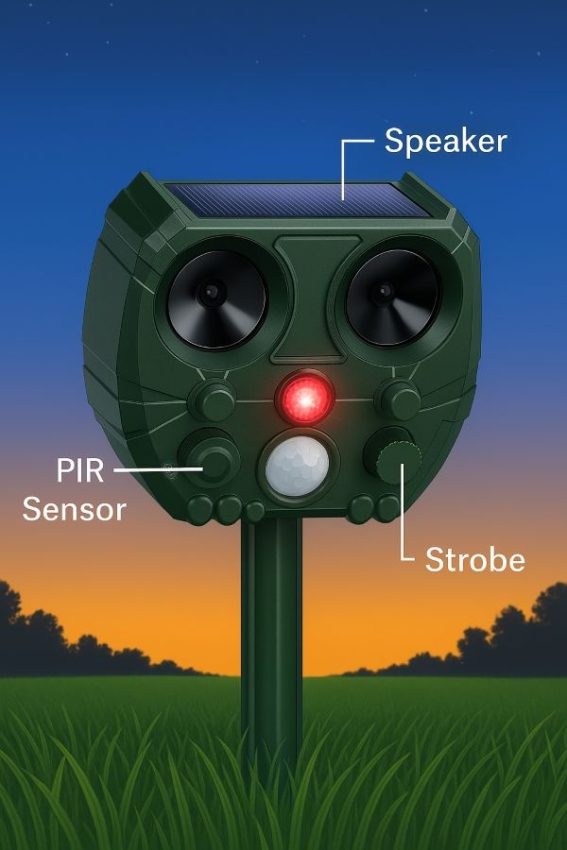
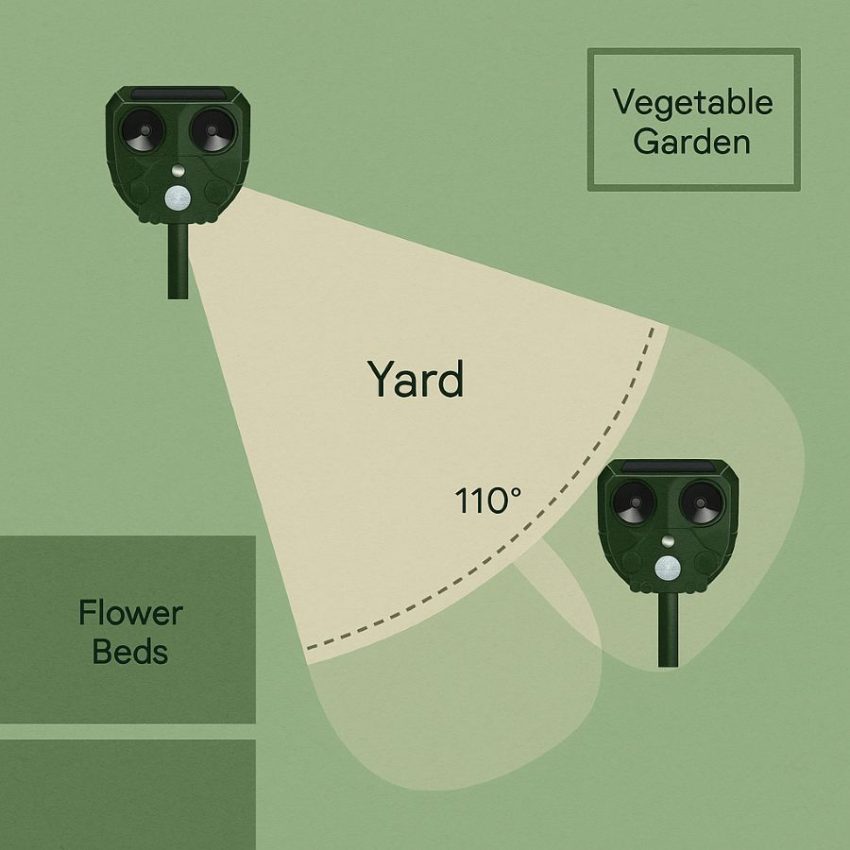
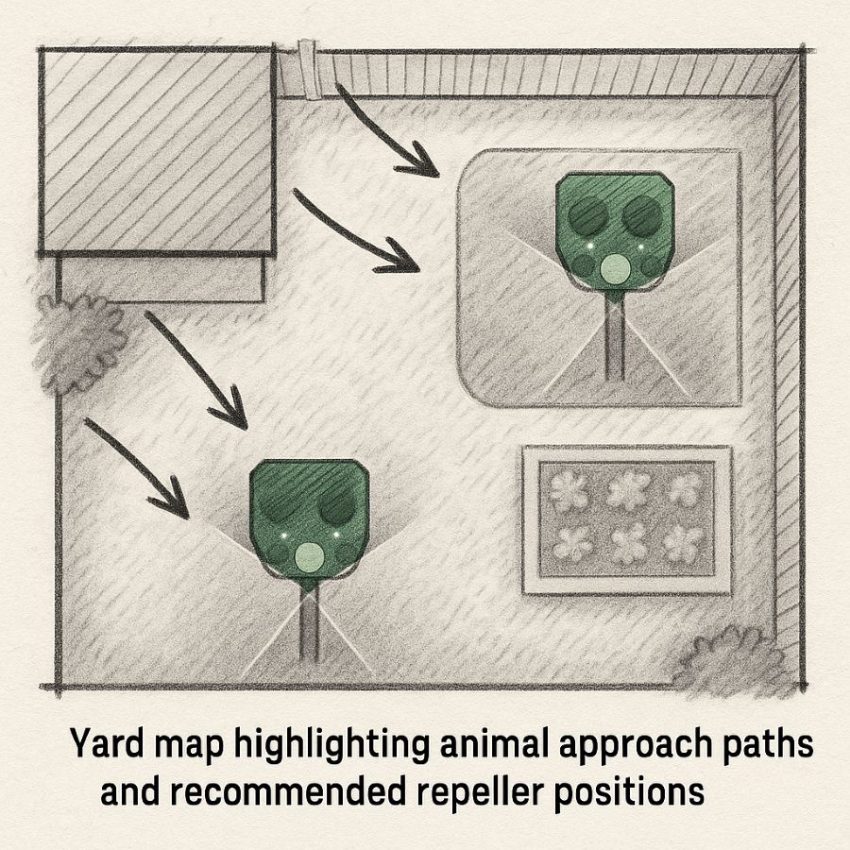
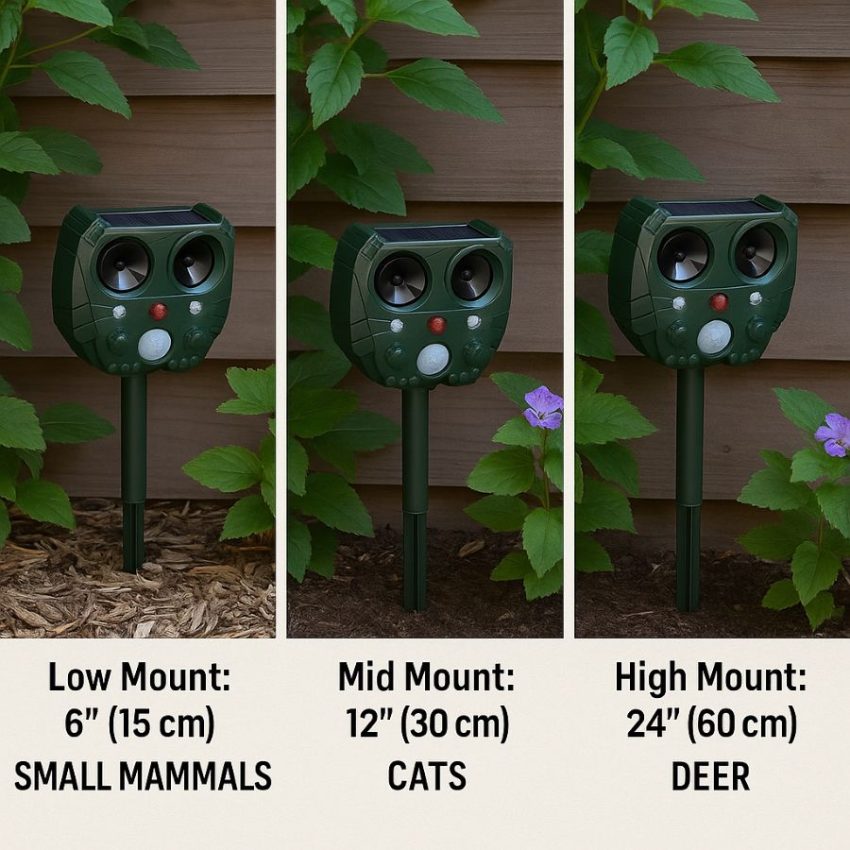
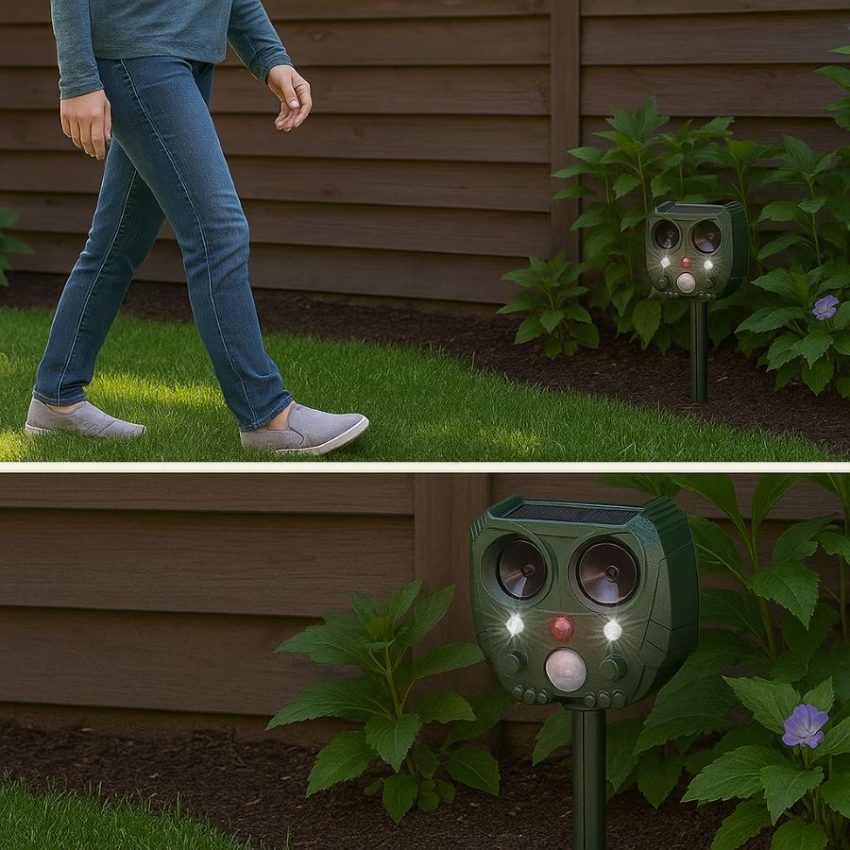
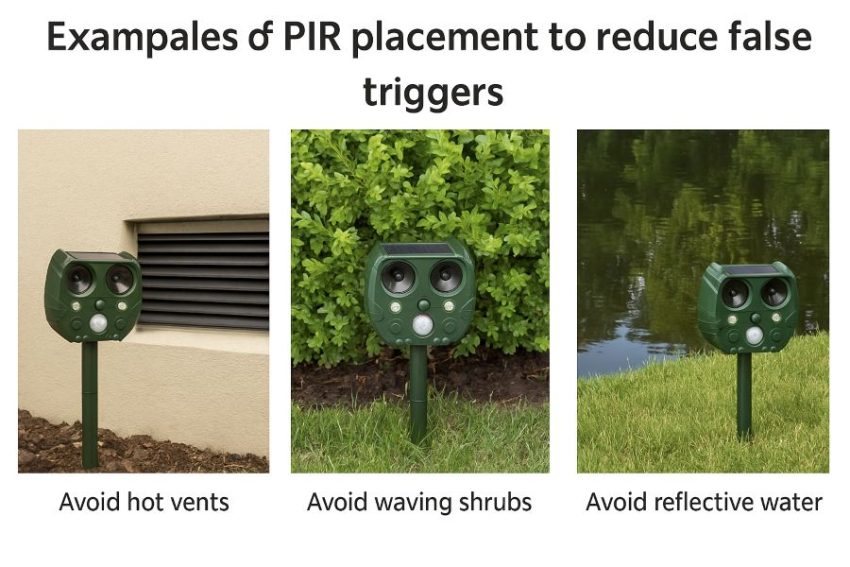
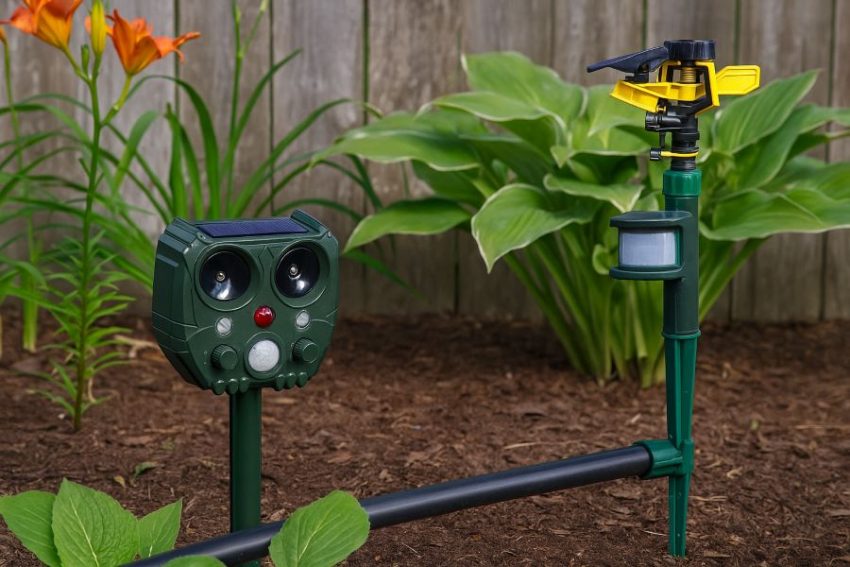
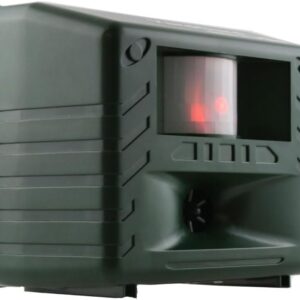
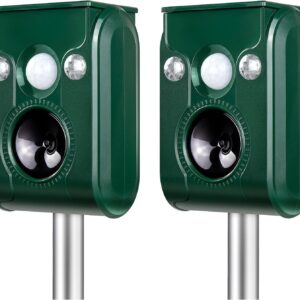
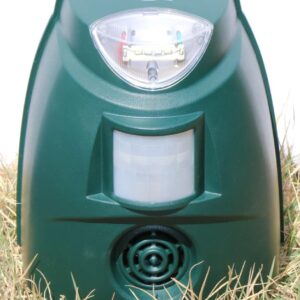
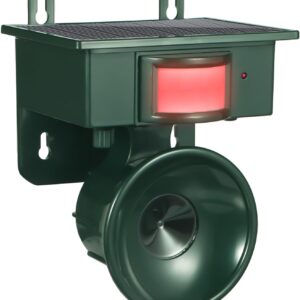
Reviews
There are no reviews yet.